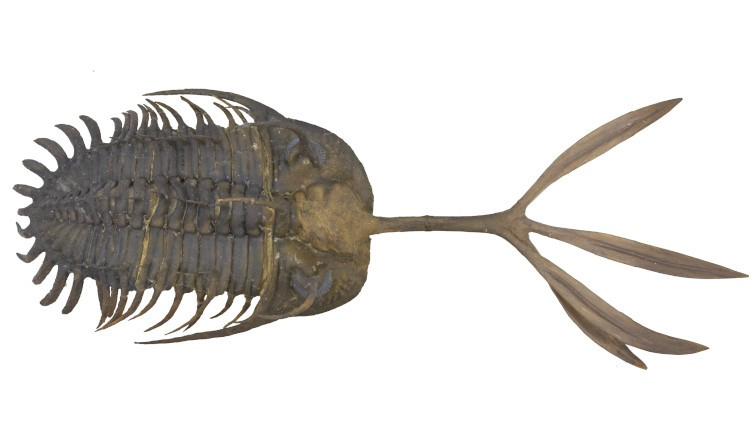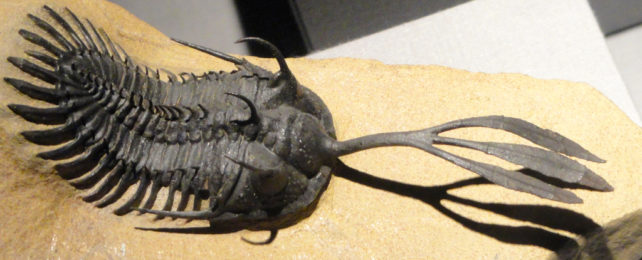A strange example of an ancient invertebrate known as a trilobite may have used the distinctive trident-like structure on its head to 'joust' for the right to mate with females, flipping rivals over on the sea bed to put them out of action.
Researchers from Bloomsburg University of Pennsylvania in the US and the Natural History Museum in the UK came to the conclusion that the head-tool has a sexual rather than a life-critical purpose after finding an adult fossil with a misshapen trident.
The marine arthropod in question is a species of Walliserops, a marine arthropod that lived on the ocean floor more than 400 million years ago. Many of its kind grew all manner of spikes and protuberances for protection, but in this genus the stand-out feature was a flat, three-pronged fork jutting from the front.
If it was indeed used to challenge for mates, the strange anatomy could be a new record for the earliest evidence of sexual combat in the animal kingdom.
"The extraordinary Devonian trilobite Walliserops carried a unique, giant trident on its head, the purpose of which has long been a mystery," says paleontologist Richard Fortey, from the Natural History Museum in the UK. "We now believe that it was used for jousting between males striving for dominance."
"The evolution of sexually motivated competition in animals is hundreds of millions of years older than we thought."
The new hypothesis is based on a stunningly preserved fossil of Walliserops trifurcatus on show in the Houston Museum of Natural History: a malformed specimen that has four prongs to its trident rather than the usual three.
The modified shape caused by the fourth tine would have made the unbalanced trident less effective at serving its purpose. If that purpose was life-critical, and the animal was born with it, every day would have been a roll of the dice for survival.
That this creature survived to adulthood shows that the trident probably didn't contribute to an essential task, such as sensing sources of food or defending against attack – which have previously been suggested as possibilities.

In comparing the tridents of the Walliserops with living creatures, the team found the closest modern example of a sex-combat tool in rhinoceros beetles: they also use implements on their heads to wrestle and in some cases joust with sexual rivals.
"The trident projection of Walliserops fits best with the morphology of a weapon used in shoveling behaviors," the researchers claim. "It has a long, wide-tipped extension which angles outward at its tip."
There are many examples of sexual selection in nature, from the brightly colored feathers of the peacock to the antlers of the deer. This trident also seems to have been key in the mating process for the Walliserops trilobites.
What's not clear yet is whether these invertebrates were sexually dimorphic – with males and females that differed in appearance. As yet, no female Walliserops have been conclusively identified, though they may have had smaller tridents, or none at all.
Of course it's difficult to make conclusive judgments on extinct animals, because we only have their fossilized remains to work from. However, the evidence presented in this study may well have solved the mystery of the Walliserops trident.
"Walliserops provides the earliest example in the fossil record of combat behavior, very likely ritualized in competition for mates," write the researchers.
"Although fossil life habits are difficult to prove, the consilience of morphology, teratology, and biometric data all point to the same interpretation, making it one of the more robust examples of paleoecological speculation."
The research has been published in PNAS.
